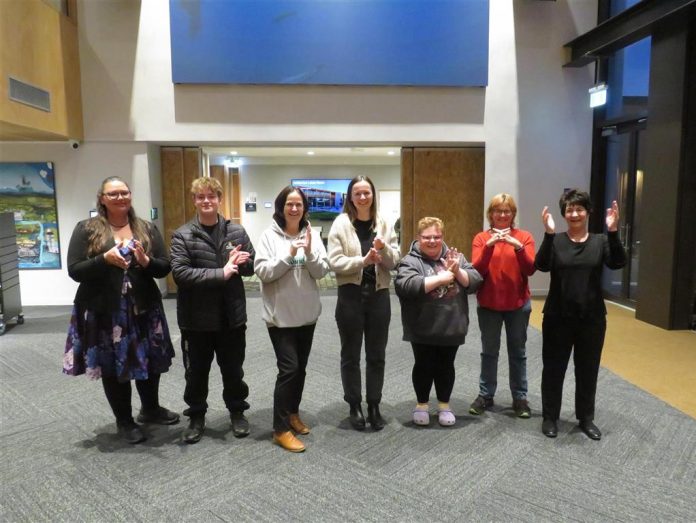
Hearing is something many take for granted, but not Carol Smith. Smith is hearing impaired. She grew up, as one of six children, with a mother who was deaf and a father who was hard of hearing.
‘‘My older brother was the one who did the communicating for the family, due to my parents not being able to hear,’’ Smith said.
This week is a special week for the deaf community as it is New Zealand Sign Language Week.
The acceptance of sign language as an official New Zealand language happened in 2006, while New Zealand Sign Language Week was introduced in 2007.
‘‘It was so amazing when it was accepted as an official language. I remember it so well, it was a celebration and a great honour for our language to be official,’’ Smith said.
She began teaching sign language in 2005. Since then she has taught thousands of students. This week she caught up with some of her former students to celebrate sign language week at Te Whare Whakatere.
She said she was passionate about people learning the language.
‘‘Things have improved over the years with more access to resources, support and interpreters for the deaf.’’
The latest data available from the 2018 Census identifies about 23,000 people who use sign language as a form of communication.
Of those users about 4600 are deaf .
Most deaf sign language users are deaf from birth or early childhood.
Only about five per cent of deaf children have deaf parents and acquire sign language from birth as a native language.
Most deaf children are born into families who are not deaf.
Hearing children born to deaf parents usually acquire sign language in the home, as well as a spoken language.
The Education Act 1877 required all children to attend school, except for those with disabilities.
In 1878, Member of Parliament William Rolleston, argued that deaf children should be educated locally rather than sent to deaf schools in Australia.
The Van Asch Deaf Education Centre was opened in Sumner, Christchurch. Students weren’t permitted to use sign language there and instead used the spoken language (oralism) of lipreading and speaking.
Signing was introduced in 1995 at Kelston Deaf Education Centre, Auckland, and soon after at Van Asch Deaf Education Centre.
Today 90 per cent of deaf children attend their local mainstream schools.
It’s a sign of the times that more and more New Zealanders are learning and using sign language.
This has increased deaf people’s access to information and raised awareness that New Zealand sign language is critical to their participation in society.
It is common now during Civil Defence emergencies to have a sign language interpreter at briefings.
District council group manager democracy and engagement Toni Durham said the district council would consider signing for any videos used during these events to update the community and share essential information and advice.
‘‘It is vital to have interpreters on television. They are a valuable asset,’’ Smith said.
‘‘It takes three years to train to be an interpreter and they have to be able to hear.’’
Many events now have interpreters.
The district council has considered having someone sign in their online meetings.
‘‘The costs associated with having someone sign a full meeting is currently prohibitive.
‘‘Our meeting videos have captions auto-generated by YouTube and Facebook,’’ Durham said.
‘‘To date the council haven’t used sign language at anything like official public events but this is something we could consider in the future,’’ Durham said.



